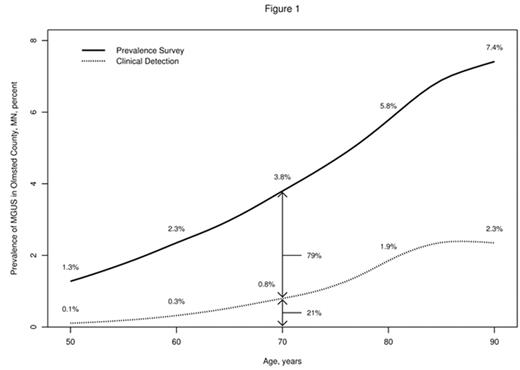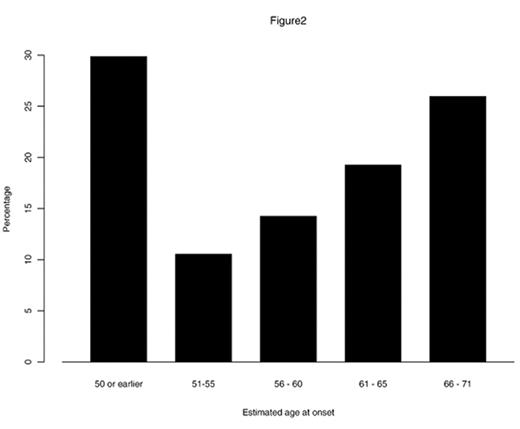Abstract
Background: Monoclonal gammopathy of undetermined significance (MGUS) is defined by a monoclonal protein concentration in serum of 3 g/dL or less and a proportion of plasma cells in the bone marrow of 10% or less, absence of lytic bone lesions, anemia, hypercalcemia, and renal insufficiency related to the proliferation of the monoclonal plasma cells. Two major questions remain unanswered:
What proportion of patients with MGUS in the population is unrecognized clinically?
What is the likely duration of MGUS at the time of its discovery?
Methods: We examined the serum of 21,463 (77%) of the 28,038 enumerated residents of Olmsted County, Minnesota, in a population-based screening study and found that MGUS was present in 1.3% of persons 50 years of age and 3.8% of those 70 years of age. The risk of progression of MGUS to multiple myeloma (MM), primary amyloidosis (AL), Waldenstrom’s macroglobulinemia (WM), or related plasma cell disorders was 1% per year.
Results: By age 70, only 21% of Olmsted County residents with MGUS, as determined by the prevalence study, had been recognized by routine clinical practice (Fig. 1). This is probably higher in Olmsted County than elsewhere because serum protein electrophoresis is frequently ordered on Mayo Clinic patients. The incidence of MGUS, estimated from the prevalence data, indicates onset of the condition long before clinical recognition. The duration of MGUS prior to detection at age 70 is shown in Fig. 2. Thus, 30% of patients recognized to have MGUS at age 70 probably had MGUS onset before age 50 and 55% had a prior (unrecognized) MGUS already by age 60. The median duration of MGUS prior to its recognition on the basis of clinical practice is 11 years (median). Linear extrapolation of the incidence curve implies a first appearance of MGUS around 30 years of age.
Figure 1
Figure 2
Author notes
Disclosure: No relevant conflicts of interest to declare



This feature is available to Subscribers Only
Sign In or Create an Account Close Modal